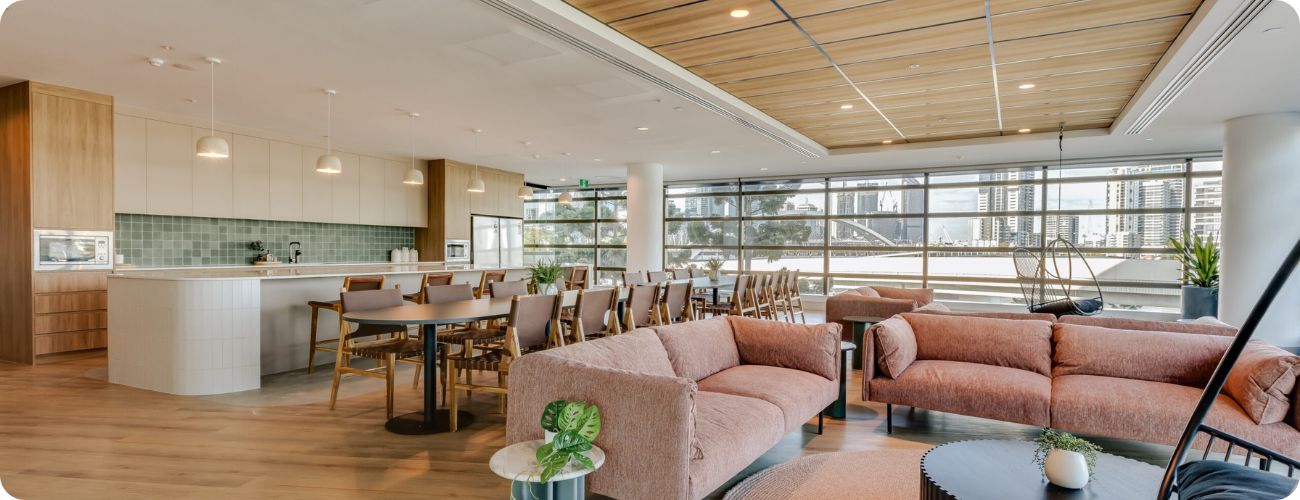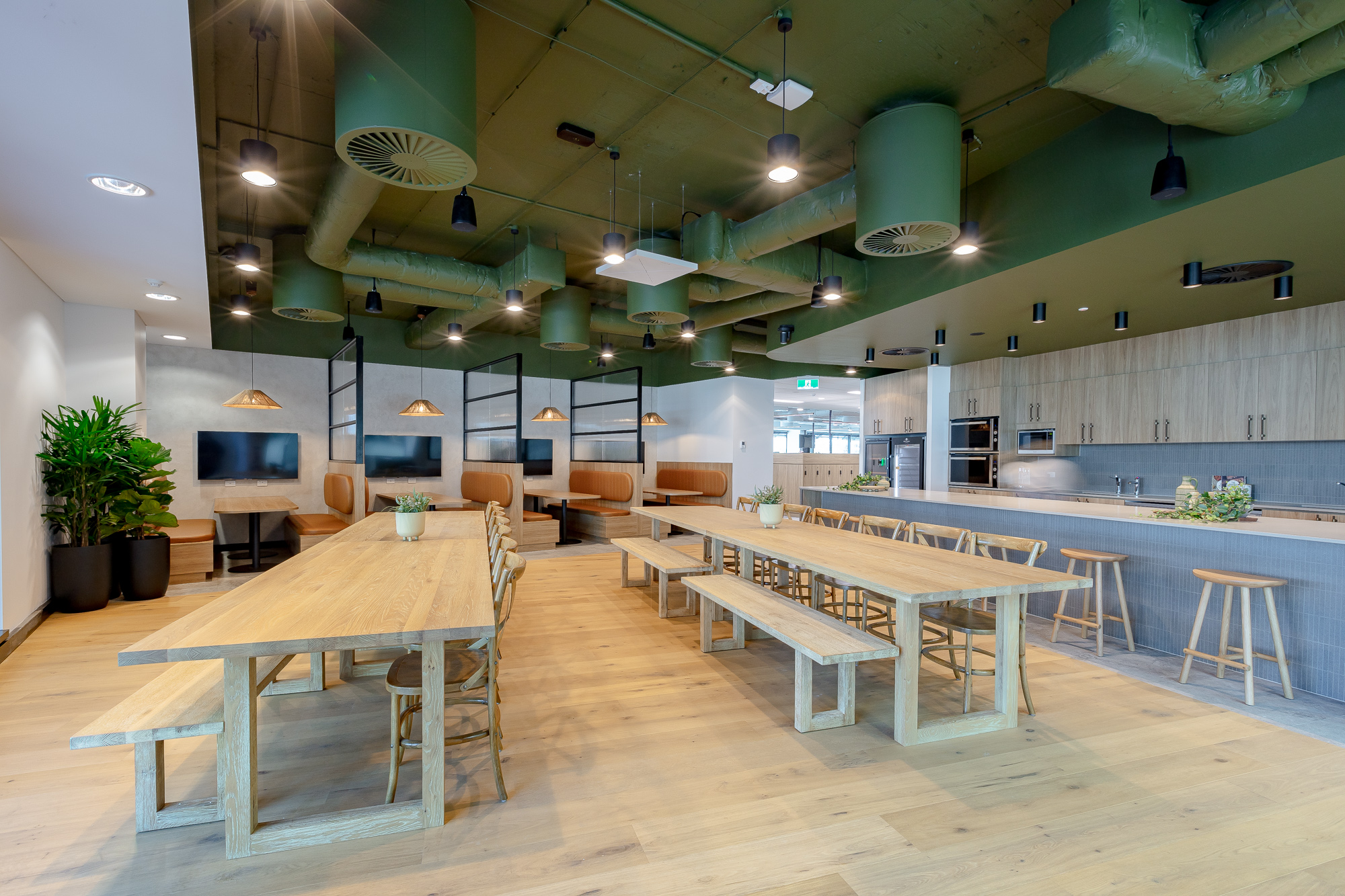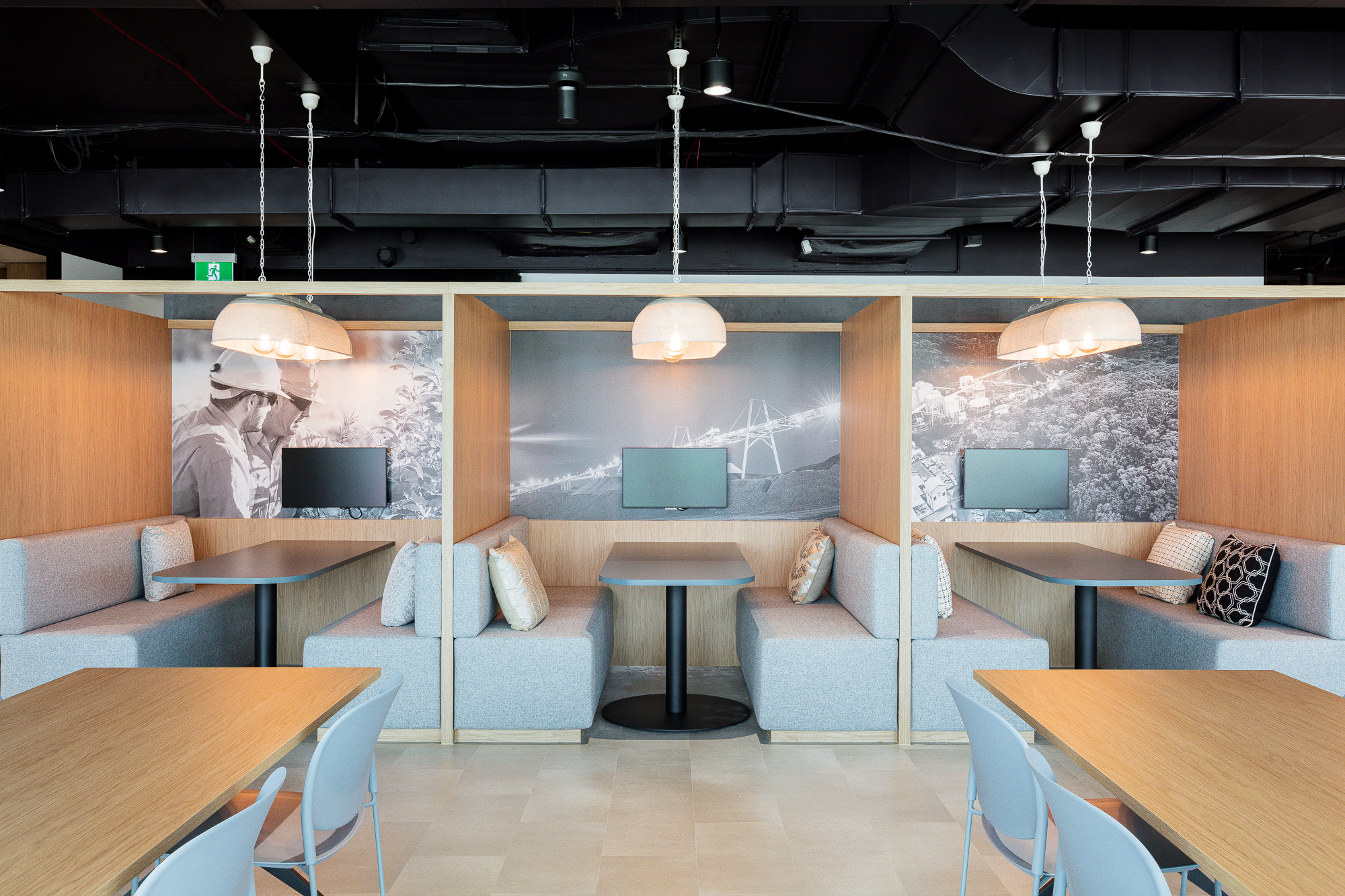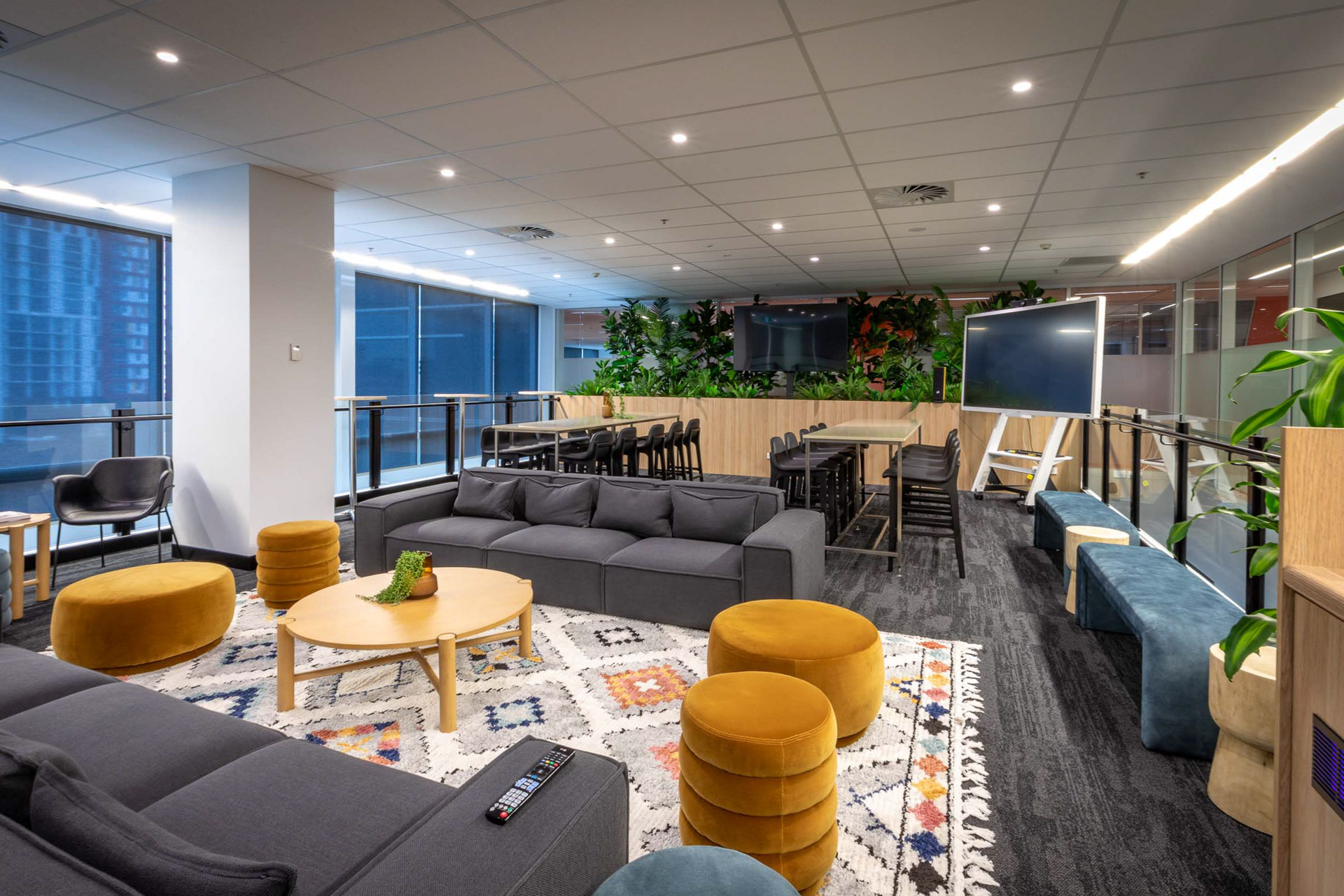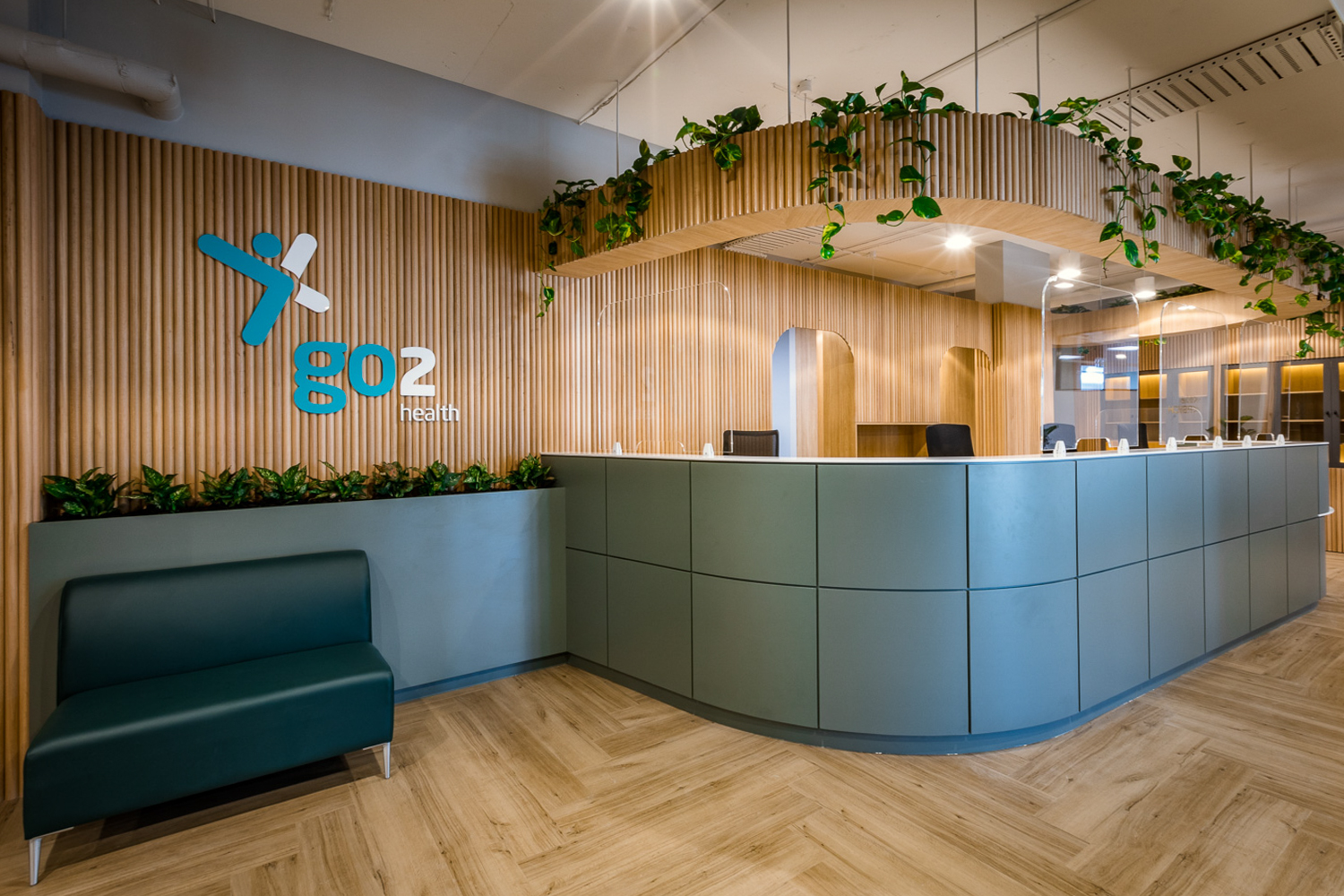Energetic, active, effective – google ‘dynamic’, and these are the definitions you’ll find. They’re wonderful qualities to have in your business, but they don’t occur in a vacuum. You have to deliberately foster them throughout your company culture, including the way you use your office space.
What is a dynamic work environment?
A dynamic workplace is adaptable and can be reconfigured to suit changing needs. Going to the office becomes an experience that offers flexibility and choice to suit different temperaments, energy levels and moods.
A dynamic work environment seeks to improve productivity and wellbeing through:
- Flexible settings that accommodate solo work, collaborative work and social connections
- Natural light, outdoor spaces and plants.
Adaptability: ‘I’ space and ‘we’ space
Most jobs involve a mix of focused work and collaborative work. Traditionally, it’s all been done from the same spot, which can create a jarring mismatch of needs.
Jan, for example, is at her desk trying to concentrate on writing a complex brief with a looming deadline. Many of her colleagues do such work at home, but Jan lives in a small apartment and doesn’t have a home office.
At the office, though, Jan sits next to Michael, who’s making a series of chatty phone calls to clients today. Both Jan and Michael are advancing the business. But Michael’s work is negatively impacting Jan’s day.
